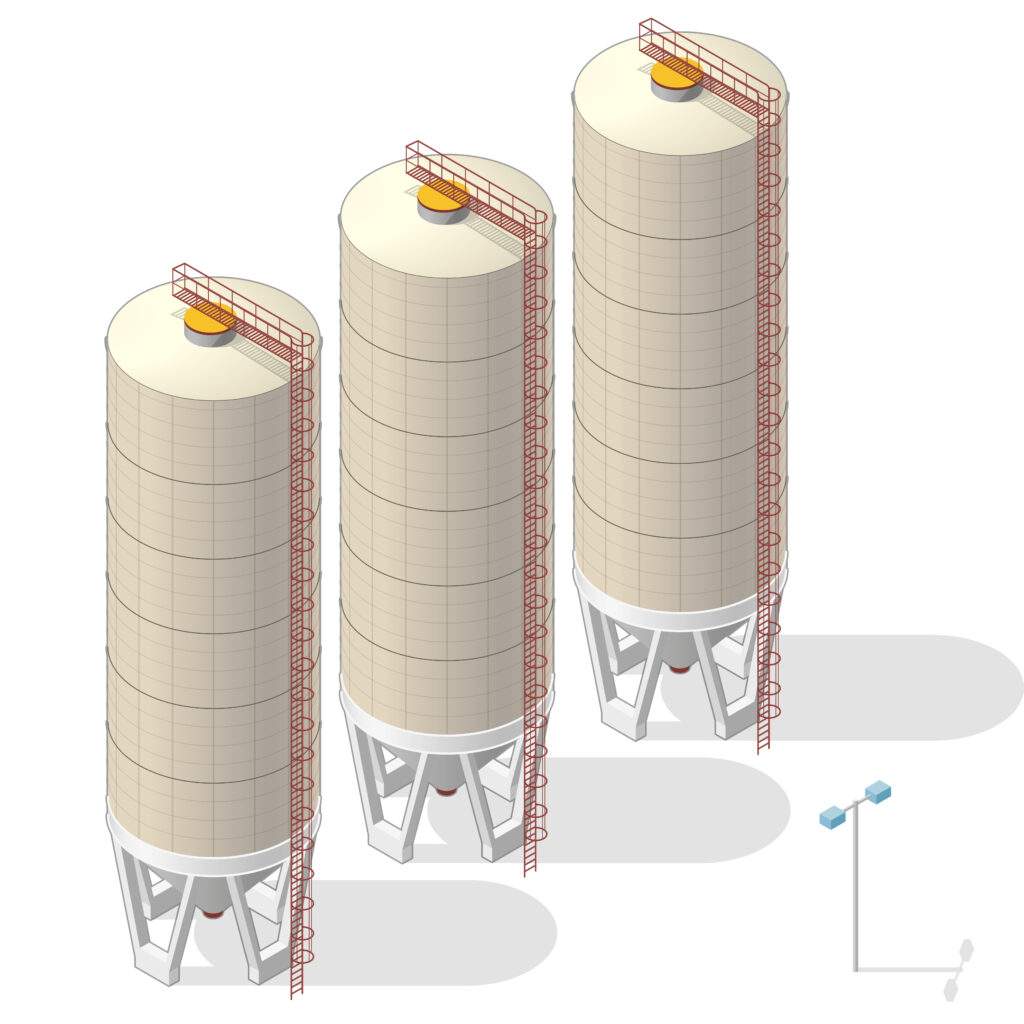The silo. Great for farmers. Not so great for others.
A question for you, dear reader: how much time do you or your employees spend trying to track down records, document versions, invoices, sales orders, etc.?

If the answer is either “more than a few minutes” or “it depends on the person I need to get it from,” that’s a sure bet you’re working in an information silo.
Most businesses don’t love the idea of letting their work pile up, yet they don’t always correctly identify the reason it happens. Why? Because It’s easy for management to attribute a work pileup to laziness or inability. Conversely, most employees in these situations tend to feel that they’ve got too much on their plate.
The bottom line: data silos create problems in both process and productivity. In fact, as Edd Wilder-James of the Harvard Business Review notes, “80% of the work in any data analysis is data preparation.”
But data silos also create issues of communication and trust— and those issues can cause more systemic problems.
So how can your company develop a more fluid workflow and speed up information retrieval without having to tear down your divisional structure (or turning into a cult)?
Where Silos Come From
Before making the distinction between removing data silos and changing organizational structure, it’s important to understand how both get created.
As organizations grow, and their processes become more complex, they form distinct specialization groups.

A typical organization may have divisions for sales, marketing, accounting, project management, human resources, IT, inventory management, and more. While divisions vary by industry and type of work, any business numbering more than a few employees naturally starts to develop this model.
The structure makes sense. I wouldn’t trust my sales team to run my accounting department, and vice versa. It’s entirely natural, then, for divisions to form. But when they do, they create work (documents, processes, data of any kind) that they don’t share.
Not because they have some inherent animosity toward other divisions, but because it’s their work. They know how to interpret it and they know where it’s stored. And if you’re in another department, you don’t know.
That’s how data silos are born from structural divisions.
Data Silos Cause Problems Company-Wide
Though silos are the natural result of business process development, that doesn’t mean we should be singing praises for the data cloisters they create.
Three key areas where data silos hurt organizations the most:

Productivity– Businesses will always have data that must be touched by more than one division. Inability to easily find that information takes time, which is one of the major culprits in backlogged work.
Accuracy & Analysis- When information touches more than one division, it may be necessary to edit or reconcile in some way. The result: data gets passed back and forth and, unless employees create a proper edit log, numbers can change or get lost in the process.
As Walter Scott of Forbes writes, “Any time data is touched by a human, objectivity decreases. Machine data is objective. It provides a single version of the truth — one the entire enterprise should share. But it’s impossible to have one version of the truth if the data is in silos.”
Culture– How well employees get along is often determined by how much they are empowered to do their jobs. Having to rely on other divisions for information can naturally create frustration and resentment of the way those in other departments work.
Likewise, members of divisions sometimes develop natural propriety over their data. Simply, they don’t want it to be touched (read: mangled) by anyone else. This, too, can lead to resentment.
Warning: How Not to Deal With Information Silos
By now, you should be convinced that information silos create organizational problems. If you’re not, read Brent Gleeson’s excellent article on the subject.
Gleeson, however, relies too much on fixing company culture at the level of culture. Here’s why that doesn’t work:
If you’ve ever developed a real friendship with a fellow employee outside of the workplace, you know how valuable they can be. You commiserate, discuss what’s working and what’s not, and sometimes develop breakthroughs that lead to a better performance on the job.
The problem with these relationships, for an organization, is that they can’t be manufactured.
Companies try to manufacture them. Oh, do they try.

Picnics, happy hours, contests, (insert your favorite forced work hangout), are all well-intentioned. And any company that cares about its culture should absolutely sponsor these types of events. After all, there’s something to be said for simply knowing that positive and collegial workplace culture is a part of your company’s mission.
But no manager or CEO should mistake those culture-building touchstones as something that will improve information sharing. No matter how much I like my coworkers in other departments, having to track down the data they manage that my department needs won’t happen any faster.
Why not? Because they’re busy. Because I’m busy. When organizations don’t have a way to easily share documents, they’re going to spend time searching. And searching.
Data: Root & the Solution
Back to the essential question: how does an organization maintain its divisional integrity while allowing for better information sharing and culture?
It’s all about the data.
Having an intelligent, streamlined way to share data relieves the burden on any particular employee or department to provide accessibility for others. While employees may “own” the work they’ve done or the numbers they’ve produced, they shouldn’t also be responsible for the wasted time it takes for someone else to retrieve it.
Nor should those who need access waste time taking others away from their work. Documents shared internally limit search time to seconds.
So the solution, naturally, is to find a document storage solution that helps divisions share, right?
Not so fast.
It’s not quite that simple. Documents managed by software applications are often proprietary. Sure, they can be exported, but that’s a manual process that takes just as much time, if not more, than the process of having to ask someone for it. Often, information retrieval means requesting and manual exporting.
It’s a real issue. As the Wall Street Journal Reports, “[36% of recently surveyed] executives whose organizations struggle with silos also were less likely to say their technology investments have achieved or exceeded their intended business outcomes.”
Software applications can share data, but that functionality can require costly integrations. And when one application updates, you have to hope your current lines of communication stay open.
The ERP Software Solution

Great workplace cultures evolve from having great processes— enabled by the software that can handle it. Having a single software solution that shares data company-wide without having to talk to several other applications provides the kind of workflow and information sharing that solves silo issues.
True cloud-based ERP software is the only way to achieve that kind of total visibility, especially in a larger organization.
Sharing data via a single application means, importantly, that there’s no need to restructure your organization. Departments can still focus on what they do best. And when they do it, their work goes into a system accessed by every employee.
This process puts an end to time spent looking for data that seems lost but is actually either floating in some application’s ether or locked away in another employee’s digital cabinet.
Opening the information gate improves your process, which improves your culture in a way that no other solution can.
Conclusion
As your organization grows, you may make valiant (and varied) attempts at connecting the divisions that have formed. You may stress collaboration and having an internal culture that works and plays well together.
But let’s face it: work is work. True collaboration comes from clarity, visibility, and access. When you’re able to connect and integrate your company via data sharing, you’ll get rid of the work pile-up.
After all, silos are best left to the farmers.

